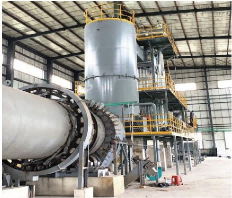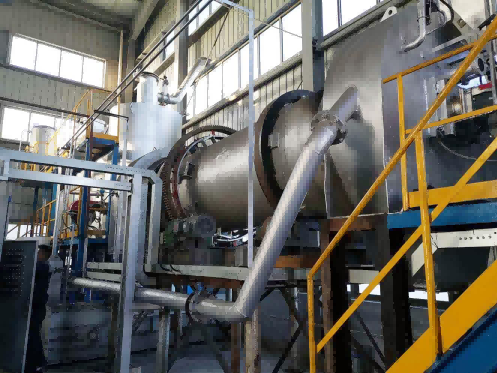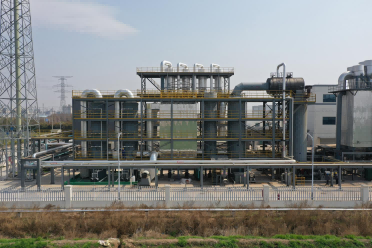
Principle introduction: Rotary kiln incinerator is a widely used incineration equipment in the field of industrial waste treatment, with a market share of over 80% in the field of industrial waste incineration. It is also a recommended incinerator type in the national industrial waste treatment technology policy, and can simultaneously or separately incinerate various hazardous waste solids, liquids, semi solid colloids, and salt residues. According to the direction of gas and solid flow in the rotary kiln, the rotary kiln incinerator is divided into two types: in the same direction and in the opposite direction. The reverse rotary kiln incinerator has better mixing and contact between gas and solid, high heat transfer efficiency, and is conducive to increasing combustion rate. However, due to the relatively high relative velocity of gas and solid, the amount of dust carried away by the exhaust is also high. The same direction rotary kiln incinerator shape is not only suitable for the input and pre-treatment of solid waste, but also can increase the residence time of gas, making it easy to achieve airtightness. At present, most rotary kiln incinerators for handling hazardous waste are of the same direction.
Heat recovery form:
☆ Saturated steam
☆ Heating hot water
☆ Heating heat transfer oil
☆ Heating hot air
Processing scale and scope of application:
☆ Processing capacity: 100-10000kg/h
☆ Treatment method: high-temperature oxidation incineration
☆ Scope of application: Various hazardous industrial waste residues; Medical waste, household waste, etc;
☆ Various industrial sludge and water treatment sludge; Slurry, plastic; Polymer waste such as rubber, oil residue, asphalt, etc; It can simultaneously incinerate wastewater, waste liquid, waste solvents, etc.
Structural features:
☆ It can simultaneously incinerate solid waste, waste liquid, and exhaust gas, with strong adaptability to incineration materials.
☆Incinerated materials flip forward, with three heat transfer methods coexisting in one furnace, resulting in a high heat utilization rate.
☆High temperature materials come into contact with refractory materials, making it convenient to replace the furnace lining and low in cost.
☆The transmission mechanism is simple, and the transmission mechanism is located on the kiln shell, making equipment maintenance simple.
☆Good sealing measures and furnace negative pressure ensure that harmful gases do not leak out.
☆Adding enhanced heat exchange and slag prevention devices in the rotary kiln not only improves incineration efficiency but also expands adaptability to waste.
☆Transforming the traditional secondary combustion chamber into a secondary combustion furnace has improved the burning rate of ash and slag, improved the incineration efficiency of the rotary kiln, and has comprehensive functions such as slag crushing and closed air lock.




